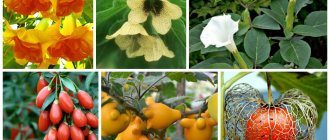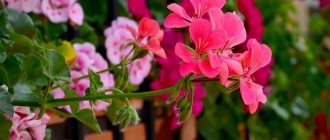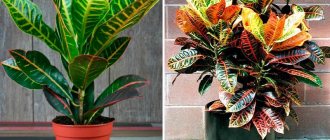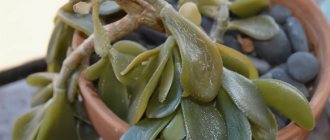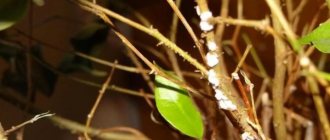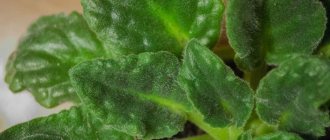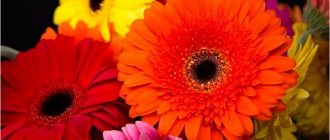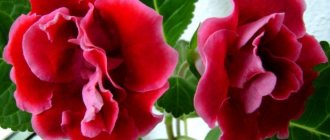Many gardeners are familiar with the nightshade flower as an ornamental plant. The culture is no less valued for its healing properties. This is a very interesting plant that can be a herb, a shrub, a tree, or have a creeping, erect or recumbent stem, depending on the particular variety.
The decorative value of nightshade lies not only in the fact that it blooms beautifully. During fruiting, the beautiful medicinal flower is covered with small fruits in the form of glossy balls. Since the fruits ripen unevenly, each berry can be painted in different colors: pale yellow, orange, dark red.
Nightshade is a very bright ornamental plant
Brief description of cultivation
- Bloom . It starts in February or March and ends in October.
- Illumination . Needs a lot of bright light, which should be diffused.
- Temperature regime . In the spring-summer period - from 18 to 26 degrees, and in winter - from 12 to 14 degrees.
- Watering . In April–September, the soil mixture is moistened when its top layer dries out. With the onset of autumn, the frequency and abundance of watering is reduced. And in winter, they just make sure that the earthen clod does not dry out.
- Air humidity . Should be high at any time of the year. To increase humidity, the pot with the bush is placed on a deep tray filled with wet expanded clay. On hot days, the plant is moistened with a spray bottle.
- Fertilizer . From the last days of spring until the beginning of autumn, nightshade is fed 2 or 3 times a month. To do this, use a complex mineral for flowering crops in liquid form.
- Rest period . Starts in October and ends in February.
- Trimming . In spring, after the fruits have ripened and the foliage begins to yellow.
- Transplant . It is carried out annually in spring immediately after pruning.
- Soil mixture . Sod and leaf soil, peat (1:1:1).
- Reproduction . Stem cuttings and seed method.
- Pests . Aphids, whiteflies and spider mites.
- Diseases . If humidity and air temperature are excessively high, the plant may shed its leaves prematurely.
Indoor nightshade: how to properly care for and replant
Interesting information about nightshade
Nightshade (Solanum) is a genus of evergreen trees, shrubs, subshrubs, perennial and annual herbs belonging to the Solanaceae family.
The genus Solanum belongs to more than one and a half thousand plant species, distributed in warm areas of acceptable climate around the world. That is why the plant with small orange fruits has many popular names. You can hear: solanum, potato tree, Jerusalem cherry, Cuban cherry, indoor cherry. The South African continent and some countries of Southeast Asia are considered the homeland of the predominant part of the Solanaceae genus.
What is nightshade? The external characteristics of nightshade are absolutely not similar to each other, if, for example, you compare the same dark-fruited nightshade with potatoes, tomatoes, eggplants, or a valuable medicinal flower - black nightshade. In natural conditions, these are small shrubs covered with greenery all year round. The leaves are oblong oval shaped. Inflorescences are racemose or paniculate. Nightshade flowers are white, yellow, purple or pink, collected in racemose or paniculate inflorescences. Bright orange fruits, reminiscent of cherries, give the plant a special charm.
A houseplant with red berries called nightshade (solanum) has become a very common decoration and addition to the interior of apartments, offices, and balconies. And in order for indoor cherry to feel at ease, it needs to create conditions close to natural ones. Namely, air humidity should be high, do not forget about spraying and coolness in winter.
Nightshade care at home
Illumination
At any time of the year, home nightshade needs a large amount of bright, but diffused light. A western or eastern window sill is perfect for it. The flower can also be placed on a south window, but in this case it will need shading at midday from the scorching rays of the sun. The northern window sill is not suitable for such a crop, since poor lighting can cause poor flowering, as well as slower growth and development of the bush.
Temperature
In spring and summer, the bush feels great at an air temperature of 18–26 degrees. During the winter months it is kept cool. If the room is warmer than 18 degrees, this may cause leaves and fruits to fly away. In this regard, in winter, the air temperature in the room should be 12–14 degrees.
In the summer, when it is warm outside, the plant can be moved to fresh air; a balcony or garden is suitable for this. For it, choose a place protected from precipitation and direct sunlight. In winter, the room where the nightshade is located must be systematically ventilated, but at the same time it must be protected from drafts.
Watering
During the growing season, which lasts from April to September, the plant is provided with abundant watering. It is carried out immediately after the surface of the soil mixture has dried slightly. In autumn and winter, watering is reduced: it should be more rare and meager. However, you cannot overdry the earthen lump.
Air humidity
The plant needs high air humidity all year round. It should be systematically moistened with a sprayer, and also place the container with the bush on a deep tray, which must first be filled with wet pebbles or expanded clay, while the bottom of the pot should not come into contact with the liquid. Due to low air humidity, fruiting may begin later and be weaker.
Fertilizer
Feed the crop 2 or 3 times throughout the month. In this case, fertilizing should be carried out from the last days of May until the first days of September. To feed nightshade, you can use special fertilizers for decorative flowering indoor crops or for tomatoes. It is better if the fertilizer is in liquid form. The concentration of the nutrient solution should be as recommended by the manufacturer (look on the packaging).
Trimming
Every year in spring the stems should be shortened by 1/3. As a rule, pruning is carried out after the fruits ripen and the leaf plates begin to yellow. And in order for the bush to be more lush, in autumn it is recommended to pinch its stems without flowers and buds.
Transplanting nightshade
When the spring pruning is completed, the bush should be transplanted into a new fertile soil mixture. To prevent water from stagnating in the roots of the plant, a 30 mm thick drainage layer is made at the bottom of the pot, using small pieces of brick or expanded clay.
For replanting a bush, a soil mixture consisting of leaf and turf soil, as well as peat (1:1:1) is suitable. You can also use a substrate consisting of peat and turf soil, as well as sand and humus (2:2:1:2). The transplanted bush must be watered. Its first feeding is carried out only 15 days after the procedure.
Transplanting and shaping nightshade in the BONSAI style
Properties
If the fruits of indoor nightshade are swallowed, serious poisoning can develop. In this regard, you need to be very careful if there are pets or small children in the house.
How to transplant solanum
Replant the decorative tomato as needed (when the solanum grows strongly). The most suitable time for replanting is early spring.
The soil required is loose, water- and breathable, and neutral in reaction. A soil mixture consisting of two parts peat or humus soil, two parts turf soil and one part sand is suitable.
Nightshade needs frequent watering, and to prevent moisture from stagnating in the pot, you will need a good drainage layer and drainage holes at the bottom of the container. Expanded clay, pebbles, clay shards, small pebbles, brick chips, pieces of foam are used as drainage; You can mix several components or use each material independently.
Increase the diameter of the container by several centimeters with each transplant. Replant the plant using the transshipment method so as not to damage the root system.
Reproduction methods
Cuttings
Stem cuttings are used to propagate indoor nightshade. After the plant is pruned in the spring, the remaining pieces are not thrown away. Select the most powerful and completely healthy sections and plant them for rooting. To do this, you can use a mixture of peat and sand, or vermiculite, or just sand.
When the cutting takes root, it is planted in a permanent individual pot, which is filled with an earth mixture consisting of sand, turf and humus soil (1: 1: 2). Don't forget to make a drainage layer at the bottom of the container. Pinch the tops of the stems of the transplanted bush to enhance its branching. During the summer period, you can make several light prunings, which will also help stimulate the plant to tiller.
Pruning and propagation of nightshade. Results after six months
Growing from seeds
To propagate nightshade, the seed method is also used. Start by filling a small container with sifted leaf soil. Distribute the seed material evenly over the surface of the substrate. Cover the seeds with a thin layer of sand. The crops are slightly moistened with a spray bottle, covered with glass or film on top and transferred to a place where it is always warm (about 22 degrees).
The first seedlings should appear after about 15 days. As the seedlings grow and develop, they will need 2 picks. Then the bushes are transplanted into a soil mixture of turf and humus soil, as well as sand (1:2:1). Next, they are cared for in the same way as rooted cuttings (see above).
Possible problems
A gardener may encounter the following problems with indoor nightshade:
- Does not form fruit. A plant indoors may require artificial pollination. To do this, it is recommended to take a brush with soft bristles and use it to transfer pollen from one flower to another.
- Flight of leaves and fruits . Most often this is due to the fact that the room is too hot and the air humidity is very high.
- Pests . Aphids, whiteflies or spider mites may settle on the plant. The most often affected are those bushes that are located in a room with too low air humidity.
Diseases and pests
Excess or lack of moisture negatively affects the plant. The leaves fade and flowering stops. It is also possible to develop root rot . Replanting and regular watering will help eliminate the problem.
Of the pests, it can be attacked by whiteflies . It is located on the bottom of the leaf and sucks out cell sap; yellowish spots form on the leaves. After which the foliage curls, turns yellow and falls off.
Another pest is the spider mite . It can be seen by the thin cobweb that appears between the leaves. The mite affects not only leaves, but also young shoots.
To control pests, you need to use insecticides according to the instructions. After 10-14 days, it is necessary to re-treat the plant.
A small shrub with rich green foliage and bright red berries will be a wonderful home decoration. But do not forget that the bright berries of nightshade, which are very similar to cherries, can cause poisoning. So keep an eye on children and animals and enjoy its beauty!
Types of nightshade with photos and names
Jasmine nightshade (Solanum jasminoides)
This species is native to Brazil. It is represented by evergreen shrubs that have thin, climbing stems without pubescence. Their length can reach up to 400 cm. The tops of the stems are decorated with elongated, ovoid, whole-edged simple leaf plates, the surface of which is without pubescence. In the lower part of the stems, glossy trifoliate foliage most often grows, the width of which is about 30 mm and the length is up to 70 mm.
As a rule, quite lush flowering is observed from early March to mid-October. The bluish flowers reach about 20 mm in diameter, and they are collected in apical paniculate inflorescences. The deep red fruits have a diameter of about 15 mm.
Giant nightshade (Solanum giganteum)
The species is represented by a branching evergreen shrub, the height of which can reach up to 6 meters. The surface of the thick branches is covered with pubescence in the form of whitish hairs, as well as short thorns. On the shoots there are elongated oval dark green leaf plates, the length of which is about 25 cm. On the underside of the foliage there is pubescence, represented by white hairs.
The bush blooms from mid-July to the end of August. Corymbose apical inflorescences are formed on the plant, consisting of hanging dark purple flowers that are relatively small in size. The species is rare in home culture; most often it can be seen in greenhouses.
Seaforth's nightshade (Solanum seaforthianum)
The species is represented by a highly decorative evergreen shrub, the height of which is about 5–6 meters. Its climbing stems are decorated with lanceolate, less often ovate-lanceolate leaf blades. They are odd-pinnate, entire and slightly wavy. The bush blooms from early March until mid-to-late autumn. The axillary panicle inflorescences consist of pendulous pale lilac flowers. The ovoid berries are red-orange in color.
Wendland nightshade (Solanum wendlandii)
In nature, the species is found in the mountainous regions of Central America at an altitude of 2000 to 3000 meters. It is represented by evergreen branching shrubs, the height of which is about 4 meters. The surface of the climbing branches is covered with short thorns. In the upper part of the stems, the foliage is oblong-elliptical, and its length is about 10 centimeters. At the bottom of the branches there is three-lobed foliage of a dark green hue, the width of which is about 10 centimeters and the length is up to 25 centimeters.
Blooms in the summer months. Apical corymbose panicles form on the bush. Densely growing purple flowers reach 50 to 60 mm in diameter. The color of the fruit is deep purple.
Nightshade (Solanum crispum)
This decorative flowering species is characterized by fast growth and climbing stems. Blue-purple flowers are collected in apical corymbs.
Nightshade (Solanum pseudocapsicum)
The species is represented by a non-deciduous subshrub, the height of which is about 50 cm. The branching stems are decorated with dark green elongated lanceolate leaf plates.
With optimal care, the bush blooms and bears fruit all year round. Single small flowers are painted white. Externally, the fruits are similar to cherries. Their color depends on the degree of ripening and can vary from green to deep red. The berries are very bitter and should not be eaten.
Pepper nightshade (Solanum capsicastrum)
The species is also popularly called “Jerusalem cherry.” An evergreen low-growing subshrub can reach a little more than half a meter in height. The elongated, lanceolate, bluish-green leaf blades have a wavy edge and vary in size.
The bush blooms from June to August. Single small flowers are painted white. The red fruits reach about 20 mm in diameter and contain poison.
Nightshade Pepper (Cuban Cherry) Unpretentious Plants for Beginners
Indoor nightshade: the secret of the plant's attractiveness
In its natural environment, nightshade is most often found in regions with warm climates. Its homeland is South America, where it reaches a meter in height. In some countries, such as Australia, the plant is destroyed because it is considered a weed. Despite this, indoor nightshade attracts lovers of house plants.
The flower grows to about 30 cm. From the outside it resembles a small bush. The oblong, lanceolate-shaped foliage has a rich dark green color, against which clearly defined veins are visible. The edges of the plates have a wavy frame, which gives the bush a spectacular look.
During the flowering period, buds appear on the branches of indoor nightshade. They can grow in inflorescences of several pieces or singly. It is interesting that flowering occurs at different times during the warm season, but the berries appear in winter. Their dimensions are approximately 1.5 cm. The color when ripe can be from bright red to orange. From the outside it looks very beautiful. Against the background of dark green leaves, scarlet beads shine with bright lights, which remain on the shoots for several months. They do not wither or fall off.
Among the popular plant varieties, the indoor decorative nightshade “Three-flowered” is especially valued. During the fruiting period, clusters of homogeneous berries appear on the branches, which decorate the living space.
